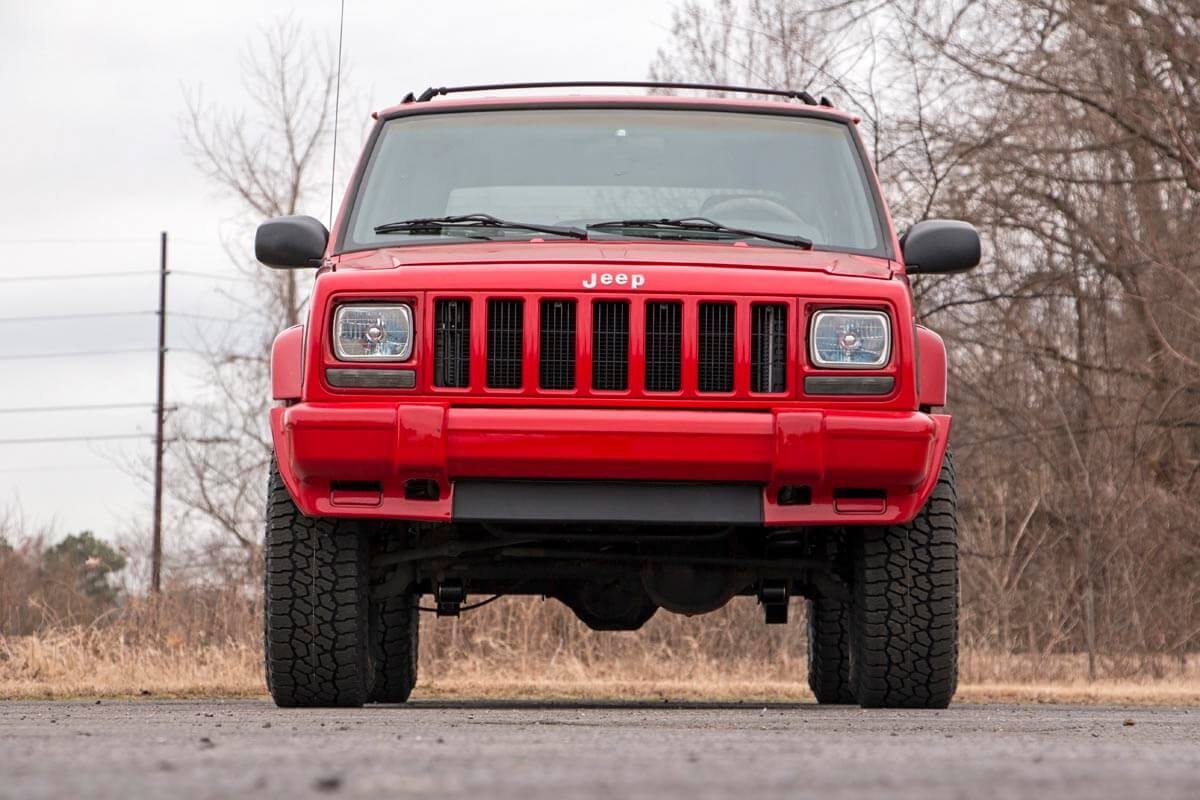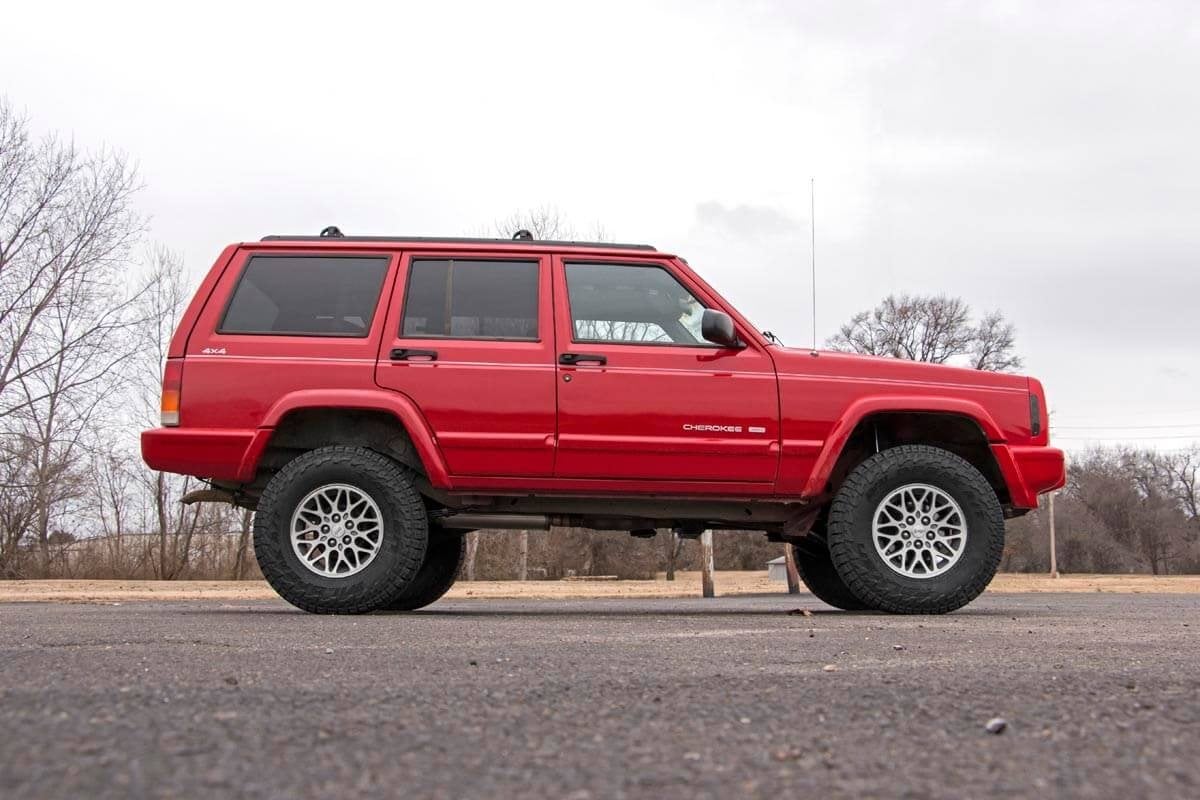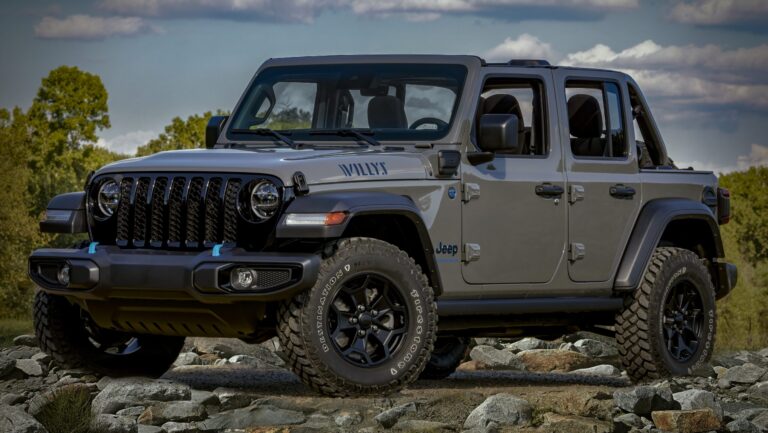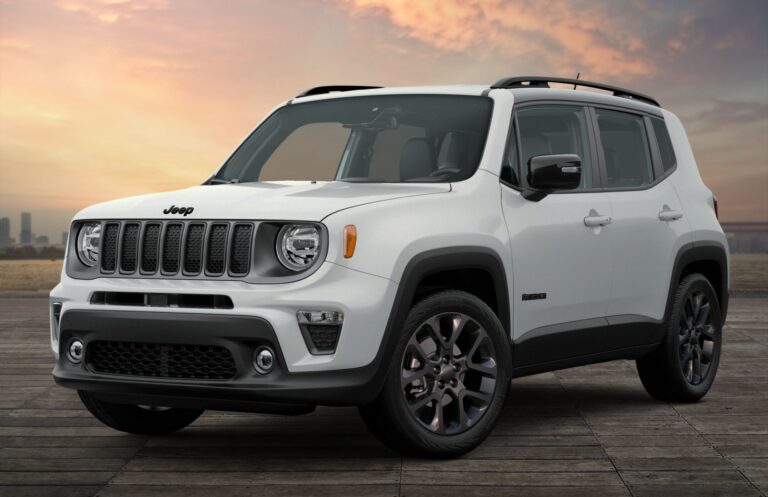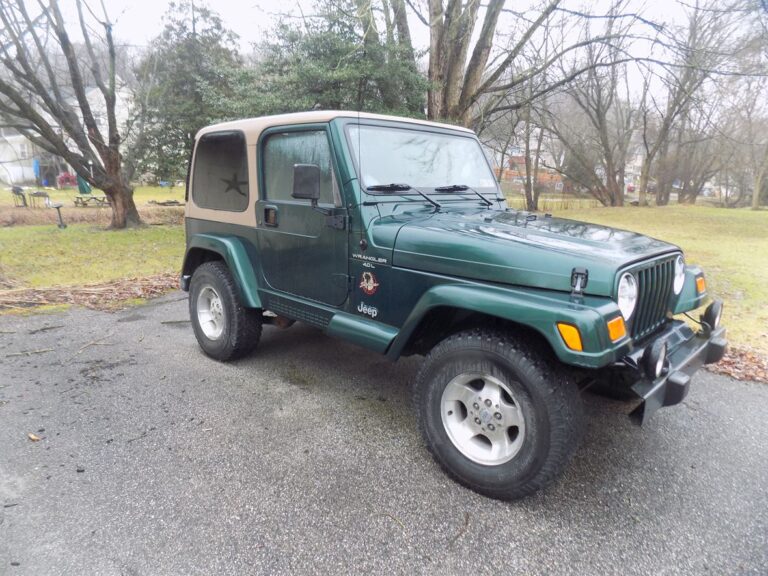Jeep XJ Lift Kit For Sale: Elevate Your Adventure
Jeep XJ Lift Kit For Sale: Elevate Your Adventure jeeps.truckstrend.com
The Jeep Cherokee XJ (1984-2001) holds a legendary status in the off-roading community. Known for its unibody construction, robust drivetrain, and simple yet effective design, the XJ is a capable machine straight from the factory. However, for those looking to push the boundaries of their off-road adventures, accommodate larger tires, or simply achieve a more aggressive stance, a Jeep XJ lift kit is an essential upgrade. This comprehensive guide will delve into everything you need to know about purchasing, installing, and maintaining a lift kit for your beloved XJ, transforming it from a capable SUV into an unstoppable trail conqueror.
Understanding the Jeep XJ Lift Kit
Jeep XJ Lift Kit For Sale: Elevate Your Adventure
At its core, a Jeep XJ lift kit is a suspension modification designed to increase the vehicle’s ground clearance and often, its wheel travel. Unlike body lifts, which only raise the body from the frame, a suspension lift genuinely elevates the entire vehicle by replacing or modifying key suspension components.
Typical components found in an XJ lift kit include:
- Coil Springs (Front): Replaces the factory front springs with taller, often stiffer, versions to achieve the desired lift height.
- Leaf Springs or Add-a-Leaf (Rear): For the rear, complete new leaf spring packs provide lift and improved load capacity/flex, while an "add-a-leaf" (AAL) inserts an additional leaf into your existing spring pack for a more economical lift.
- Shock Absorbers: Longer shocks are crucial to accommodate the increased suspension travel and ensure proper dampening. Many kits include performance-tuned shocks designed for off-road use.
- Control Arms (Front): These link the axle to the frame. Lifted XJs often require longer or adjustable control arms (upper and lower) to correct caster angles and prevent binding.
- Track Bar (Front): This bar centers the front axle under the vehicle. A lifted XJ will need an adjustable track bar or a relocation bracket to maintain proper axle alignment.
- Sway Bar Disconnects/Extended Links: Allows the front sway bar to be disconnected for greater articulation off-road, or extends the stock links to maintain proper geometry on-road.
- Extended Brake Lines: Essential for safety, these prevent brake lines from stretching or breaking at full suspension droop.
- Transfer Case Drop Kit or Slip Yoke Eliminator (SYE): Often necessary for lifts of 3 inches or more to correct driveline angles and prevent vibrations. An SYE is a more robust, but more expensive, solution.
- Bump Stop Extensions: Prevents tires from rubbing fenders at full compression and protects shocks from bottoming out.
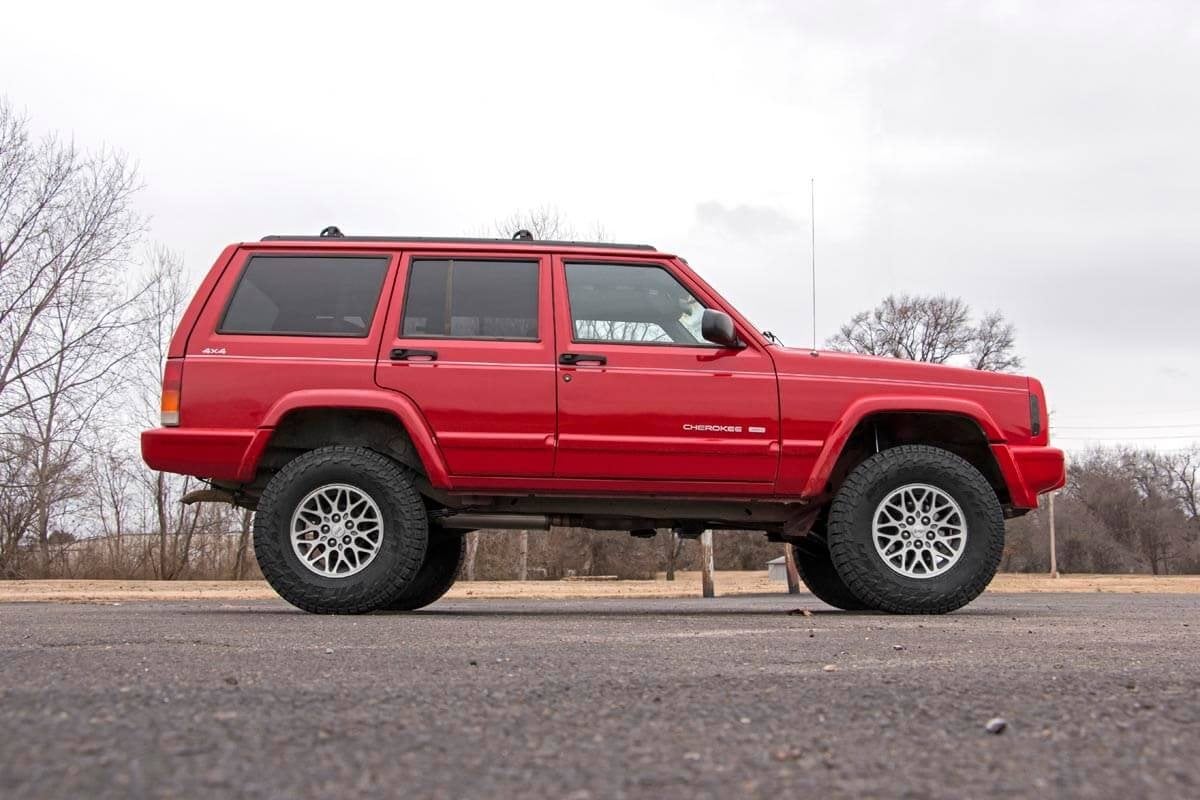
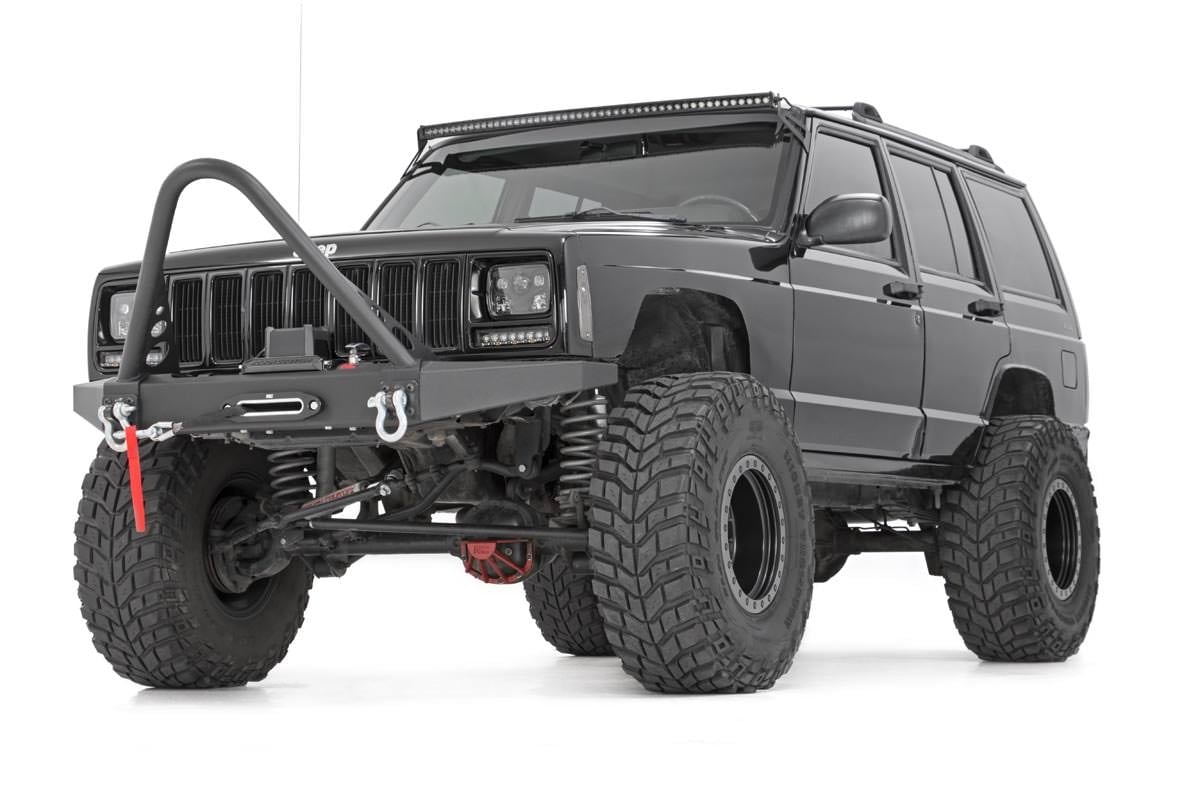
Each of these components plays a vital role in ensuring your lifted XJ performs safely and effectively, both on and off the pavement.
Benefits of Installing a Lift Kit on Your XJ
Investing in a lift kit for your XJ offers a multitude of advantages for the serious enthusiast:
- Increased Ground Clearance: This is perhaps the most obvious benefit. A higher clearance means you can navigate over larger rocks, logs, and uneven terrain without scraping the undercarriage, protecting vital components like the differential, transfer case, and fuel tank.
- Accommodation for Larger Tires: Lift kits are almost always paired with larger, more aggressive off-road tires. These tires offer superior traction, flotation in sand or mud, and further increase ground clearance, significantly enhancing off-road capability.
- Enhanced Off-Road Performance: Beyond just clearance, a well-designed lift kit improves articulation – the ability of your suspension to flex and keep all four tires on the ground over uneven surfaces. This translates to better traction and stability on challenging trails. Improved approach, departure, and break-over angles also allow you to tackle steeper obstacles.
- Improved Ride Quality (with quality kits): While some budget lifts can stiffen the ride, many reputable lift kits, especially those with high-quality shocks and springs, can actually improve the ride comfort over worn stock suspension, particularly on rough terrain.
- Aesthetic Appeal: Let’s be honest, a lifted XJ with chunky tires just looks undeniably cool and aggressive, giving your classic Cherokee a commanding presence.

Types of Jeep XJ Lift Kits Available
The market for XJ lift kits is vast, catering to various budgets, needs, and desired lift heights. They can generally be categorized by their complexity and the amount of lift they provide:
-
Budget Boosts/Spacer Lifts (1-2 inches):
- Description: These kits use coil spacers in the front and extended shackles or add-a-leafs in the rear. They are the most affordable option.
- Pros: Inexpensive, relatively easy to install, provide just enough room for slightly larger tires (e.g., 30-31 inches).
- Cons: Do not replace worn suspension components, offer minimal improvement in articulation, and ride quality may not improve. Best for cosmetic lift or very light trail use.
-
Basic Short Arm Kits (2-3.5 inches):
- Description: Typically include new coil springs, full leaf springs or AALs, and new shocks. May or may not include a track bar bracket or extended sway bar links.
- Pros: Good entry point for genuine off-road capability, allows for 30-31 inch tires (some 32s with trimming), improved ride over budget boosts.
- Cons: Can sometimes induce minor driveline vibrations at the higher end of this range, stock control arms may limit articulation.
-
Mid-Range Short Arm Kits (4-4.5 inches):
- Description: A very popular lift height for XJs, these kits usually include new coil springs, full leaf springs, longer shocks, adjustable lower control arms, an adjustable track bar, extended brake lines, and sway bar disconnects. Often come with a transfer case drop kit.
- Pros: Excellent balance of on-road manners and off-road capability, ideal for 31-32 inch tires (some 33s with trimming), significantly improved articulation.
- Cons: Driveline vibrations are more likely, often requiring a Slip Yoke Eliminator (SYE) and CV driveshaft for optimal performance.
-
Premium Short Arm Kits (4.5-5.5 inches):
- Description: Similar to mid-range but with higher quality components, often including adjustable upper and lower control arms, heavy-duty track bars, better shocks (e.g., monotube), and more comprehensive hardware. Some may include an SYE option.
- Pros: Superior performance and durability, excellent articulation, can comfortably run 32-33 inch tires (some 35s with significant trimming and gearing).
- Cons: Higher cost, almost always requires an SYE and CV driveshaft, may necessitate steering upgrades (e.g., heavier tie rod/drag link).
-
Long Arm Kits (4.5+ inches):
- Description: These kits replace the stock short control arms with much longer ones, relocating their mounting points further back on the frame via a new crossmember.
- Pros: Unmatched articulation, significantly improved ride quality on-road and off-road due to flatter control arm angles, ideal for extreme rock crawling and large tires (33-37 inches).
- Cons: Most expensive option, complex installation requiring welding and cutting, very involved setup, requires SYE/CV driveshaft, often needs extensive steering, braking, and gearing upgrades.
Key Considerations Before Purchasing
Before you hit the "buy now" button, it’s crucial to consider several factors to ensure you choose the right lift kit for your XJ and avoid costly mistakes:
- Intended Use: Is your XJ a daily driver, a weekend trail rig, or a dedicated rock crawler? Your intended use will dictate the necessary lift height, component quality, and overall budget.
- Budget: Lift kits range from a few hundred dollars to several thousand. Remember, the cost of the lift kit is often just the beginning. Factor in larger tires, wheels with proper backspacing, an SYE, potential re-gearing for larger tires, and professional installation if you’re not doing it yourself.
- Desired Tire Size: The tire size you want to run largely determines the lift height you’ll need. Don’t buy a 6.5-inch lift if you only plan to run 31-inch tires.
- Component Quality and Brand Reputation: Do your research. Stick to reputable brands known for quality and customer support (e.g., Rough Country, Zone Offroad, TeraFlex, Rubicon Express, BDS Suspension, Clayton Off Road, Rock Krawler). Cheaper kits often use inferior materials and can lead to premature wear or performance issues.
- Driveline Implications: Lifts of 3 inches or more often lead to driveline vibrations due to increased driveshaft angles. A transfer case drop can help for minor lifts, but an SYE (Slip Yoke Eliminator) and a CV (Constant Velocity) driveshaft are the best solution for 4+ inch lifts.
- Steering and Braking Upgrades: Taller lifts and larger tires put more stress on steering components. Consider upgrading your tie rod, drag link, and steering box brace. Extended brake lines are a must for safety.
- Installation Difficulty: Some kits are bolt-on and relatively straightforward for a competent DIY mechanic, while others (especially long arm kits) require welding, cutting, and specialized tools. Be realistic about your mechanical skills and available tools.
Practical Advice and Actionable Insights
- Measure Before and After: Always measure your XJ’s stock ride height before starting, and again after the lift is installed. This helps confirm the actual lift achieved and identifies any discrepancies.
- Don’t Skimp on Shocks: Shocks are critical for ride quality and performance. Even if you’re on a budget, investing in good quality shocks will make a huge difference.
- Address Driveline Angles Proactively: If you’re going 3 inches or higher, plan for a transfer case drop or, preferably, an SYE/CV driveshaft combo. It’s much better to address vibrations before they become a problem.
- Consider Re-Gearing: For tire sizes 33 inches and above, re-gearing your axles is highly recommended. It restores lost power, improves fuel economy, and reduces stress on your drivetrain. Even for 31-32 inch tires, re-gearing can significantly improve performance, especially if your XJ has 3.55 or 3.07 gears.
- Get a Professional Alignment: After installing a lift kit, a professional alignment is non-negotiable. This ensures proper steering geometry, prevents premature tire wear, and eliminates dangerous "death wobble."
- Join XJ Forums and Groups: Online communities (e.g., Cherokee Forum, NAXJA, local Jeep clubs) are invaluable resources for specific kit reviews, installation tips, troubleshooting, and finding used parts.
Installation Overview (Simplified)
While a full step-by-step guide is beyond the scope of this article, here’s a general overview of the lift kit installation process:
- Safety First: Park on a level surface, set the parking brake, chock the rear wheels (for front work) or front wheels (for rear work). Use sturdy jack stands under the frame. Never work under a vehicle supported only by a jack.
- Disconnect Components: Disconnect shocks, sway bar links, brake lines, track bar, control arms, and any other components that will impede suspension travel.
- Remove Old Suspension: Carefully remove the old coil springs, leaf springs, and shocks. Be prepared for stubborn, rusted bolts! A penetrating oil (like PB Blaster) and a breaker bar are your friends.
- Install New Components: Install the new coil springs, leaf springs (or AALs), shocks, control arms, track bar, extended brake lines, and sway bar links/disconnects according to the kit instructions.
- Reconnect and Torque: Reconnect all components, ensuring all bolts are tightened to the manufacturer’s specified torque settings.
- Bleed Brakes: If you replaced brake lines, you must bleed the entire brake system.
- Test Drive and Re-Torque: Take a short, careful test drive. Listen for unusual noises or vibrations. After a few hundred miles, re-torque all suspension bolts as components settle.
Maintenance and Longevity of Your Lifted XJ
A lifted XJ requires ongoing maintenance to ensure safety and longevity:
- Regular Inspections: Periodically inspect all suspension components for wear, damage, or loose bolts. Pay close attention to bushings, ball joints, and tie rod ends.
- Lubrication: Grease all fittings on control arms, track bars, and sway bar links that are greaseable.
- Alignment Checks: Get your alignment checked annually or after any significant off-road excursion.
- Tire Care: Rotate and balance your larger tires regularly to ensure even wear.
- Address Issues Promptly: Don’t ignore new noises, vibrations, or steering issues (like "death wobble"). These are often symptoms of a problem that needs immediate attention.
Jeep XJ Lift Kit For Sale: Estimated Price Table
Prices for Jeep XJ lift kits vary significantly based on brand, lift height, and the completeness/quality of components. The table below provides estimated ranges for typical kits. These prices are for the kit itself and do not include installation, tires, wheels, or other related upgrades like SYEs or re-gearing.
| Kit Type / Lift Height | Estimated Price Range (USD) | Key Components Included (Typical) | Considerations / Best For |
|---|---|---|---|
| Budget Boost (1-2") | $150 – $400 | Coil spacers, extended shackles/AAL | Entry-level, minor tire clearance, aesthetics; retains stock ride. |
| Basic Short Arm (2-3.5") | $400 – $800 | New coil springs, AAL/full leaf, shocks, track bar bracket | Good all-rounder, light to moderate trails, 30-31" tires; may require minor driveline adjustments. |
| Mid-Range Short Arm (4-4.5") | $800 – $1,500 | New coil/leaf, shocks, adjustable lower control arms, adjustable track bar, extended brake lines, sway bar links | More serious off-roading, 31-32" tires; often requires SYE. |
| Premium Short Arm (4.5-5.5") | $1,500 – $2,500+ | High-quality springs/shocks, HD adjustable control arms, HD track bar, SYE kit option, extended brake lines, bump stops | Aggressive trail use, 32-33" tires; excellent articulation, often includes more robust steering components. |
| Long Arm Kits (4.5"+) | $2,000 – $4,000+ | Long arms, custom cross-member, premium springs/shocks, HD track bar, SYE, extended brake lines, bump stops, sometimes steering upgrades | Maximum articulation, rock crawling, best ride quality, 33-35"+ tires; complex installation, cutting required. |
Disclaimer: Prices are estimates and can vary significantly based on brand, specific components, sales, and retailer. Always check current pricing from reputable vendors.
Frequently Asked Questions (FAQ)
Q1: What is the maximum tire size I can run with an XJ lift kit?
A1: It depends on the lift height and fender trimming.
- 1-2" lift: Up to 30 inches (sometimes 31s with minor trimming).
- 3-4" lift: 31-32 inches (33s with significant trimming).
- 4.5-5.5" lift: 32-33 inches (35s with heavy trimming and bump stop adjustment).
- 6.5"+ lift: 35 inches and above, usually requires long arms, extensive trimming, and custom work.
Q2: Do I need a Slip Yoke Eliminator (SYE) and a CV driveshaft?
A2: For lifts of 3 inches or more, especially 4 inches and up, an SYE and CV driveshaft are highly recommended to prevent driveline vibrations and improve driveshaft strength. A transfer case drop can be a temporary or partial solution for smaller lifts (2-3 inches), but an SYE is the preferred long-term fix.
Q3: Will my XJ get "death wobble" after a lift?
A3: Death wobble (violent steering wheel oscillation) is not directly caused by a lift, but a lift can expose pre-existing worn steering or suspension components (e.g., track bar, tie rod ends, ball joints, control arm bushings). Proper installation, correct alignment, and healthy steering/suspension components are key to preventing it.
Q4: How much does professional installation of a lift kit cost?
A4: Installation costs vary widely by region and shop, but typically range from $500 to $1500 for a standard short arm kit. Long arm kits or those requiring welding will be significantly more.
Q5: Can I install a lift kit myself?
A5: Yes, many XJ owners install their own lift kits. It requires a good set of tools (sockets, wrenches, jack, jack stands, pry bars), patience, and a service manual. Rusted bolts can be a major challenge. Long arm kits or those involving cutting/welding are best left to experienced mechanics or professionals.
Q6: What’s the difference between short arm and long arm lift kits?
A6: Short arm kits use control arms that are roughly the same length as stock. Long arm kits use much longer control arms, which are mounted further back on the frame via a new crossmember. Long arms provide flatter control arm angles, resulting in better articulation, less bind, and a smoother ride, especially on larger lifts.
Q7: Do I need new wheels when I lift my XJ?
A7: Often, yes. Larger tires require specific wheel backspacing (typically 3.75-4.5 inches for an XJ) to prevent rubbing on control arms or fenders at full lock or compression. Stock wheels usually have too much backspacing for wider, larger tires.
Conclusion
The Jeep XJ Cherokee remains an icon for its rugged simplicity and off-road prowess. Installing a well-chosen lift kit transforms this already capable vehicle into a truly formidable machine, ready to tackle significantly more challenging terrain and stand out with an undeniable presence. From enhancing ground clearance and articulation to accommodating larger, more aggressive tires, a lift kit is a pivotal upgrade for any XJ enthusiast.
While the process involves careful consideration of budget, intended use, and component compatibility, the rewards are immense. By researching thoroughly, investing in quality components, and ensuring proper installation and maintenance, you can unlock your Jeep XJ’s full potential, ensuring countless years of thrilling adventures on and off the beaten path. Your "Jeep XJ Lift Kit For Sale" journey is not just about buying parts; it’s about investing in a lifestyle of exploration and capability.
